 Weird Stuff
Weird Stuff  Weird Stuff
Weird Stuff  Mysteries
Mysteries 10 Tragic Disappearances and Deaths in Joshua Tree National Park
 History
History 10 Ways Childhood Really Sucked in the Old West
 Music
Music 10 Name Origins of Famous Bands from the 1990s
 Religion
Religion 10 Biggest Turnarounds by the Catholic Church
 Weird Stuff
Weird Stuff 10 Unbelievable Times Laws Had Unintended Consequences
 Humans
Humans Ten Historic Women Who Deserve Way More Credit Than They Got
 Movies and TV
Movies and TV 10 Films That Spawned Major Lawsuits
 History
History Ten Times Towns Were Wiped Off the Face of the Earth
 Creepy
Creepy 10 of the Most Disturbingly Haunted Public Houses in the UK
 Weird Stuff
Weird Stuff 10 Niche Subcultures That Are More Popular Than You Might Think
 Mysteries
Mysteries 10 Tragic Disappearances and Deaths in Joshua Tree National Park
 History
History 10 Ways Childhood Really Sucked in the Old West
Who's Behind Listverse?

Jamie Frater
Head Editor
Jamie founded Listverse due to an insatiable desire to share fascinating, obscure, and bizarre facts. He has been a guest speaker on numerous national radio and television stations and is a five time published author.
More About Us Music
Music 10 Name Origins of Famous Bands from the 1990s
 Religion
Religion 10 Biggest Turnarounds by the Catholic Church
 Weird Stuff
Weird Stuff 10 Unbelievable Times Laws Had Unintended Consequences
 Humans
Humans Ten Historic Women Who Deserve Way More Credit Than They Got
 Movies and TV
Movies and TV 10 Films That Spawned Major Lawsuits
 History
History Ten Times Towns Were Wiped Off the Face of the Earth
 Creepy
Creepy 10 of the Most Disturbingly Haunted Public Houses in the UK
Top 10 People Who Give Islam a Bad Name
Islam is the second-largest religion in the world (Christianity is the largest), and one of the fastest growing. While there have been very good Muslims, some have been very bad. This list, in a sense, is a response to the earlier lists of Top 10 People Who Give Christianity a Bad Name and Top 10 People who give Atheism a Bad Name. It is not meant as a commentary on Islam itself – merely ten of its adherents.
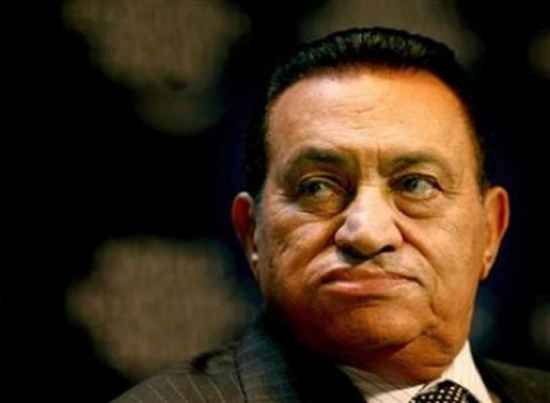
Muhammad Hosni Mubarak was the President of the Arab Republic of Egypt for 30 years. He held office from 1981, until he was forced to resign by mass protests on February 11, 2011. Mubarak was trained as a pilot, and rose in the ranks of Egypt’s air force during the 1960s and ’70s. President Anwar Sadat named Mubarak to be his vice president in 1975, and in 1978 Mubarak became the vice chairman of the National Democratic Party (NDP), the governing political party in Egypt. When Anwar Sadat was assassinated on October 14, 1981, Mubarak succeeded him to become Chairman of the NDP, as well.
Mubarak quickly became an old-style strongman, with full control of the government. Running uncontested, Mubarak won the Presidency in national referenda in 1987, 1993 and 1999; and, after a change in laws, he won running against a token opponent in 2005. He focused on economic growth and inched toward political reform, but any economic gains in the 1990s were offset by criticisms that Egypt was a near-dictatorship; indeed, Mubarak never lifted the state of emergency imposed after Sadat’s assassination.
In February 2005, Mubarak announced plans for a September 2005 election, that would be Egypt’s first-ever multi-candidate contest for the presidency. On September 7, 2005, he handily won his fifth consecutive term in those elections, but the victory was clouded by low voter turnout, reports of fraud and the imprisonment of Mubarak’s political rival, Ayman Nour. The next years were dominated by two issues: calls for political reform and Mubarak’s love/hate relationship with the United States, a steady provider of military aid.
Mubarak was rebuked for his lack of commitment to democracy by American leaders, including President George W. Bush and Secretary of State Condoleezza Rice, but he remained an important U.S. ally in the region, especially during the U.S. war in Iraq. Egyptians took to the streets in January 2011, to protest his rule; Mubarak at first shuffled his cabinet, then said he would step down in September. He finally was forced to resign on February 11, 2011.

Crown Prince Abdullah has been the acting leader of Saudi Arabia since his half-brother, King Fahd, suffered a stroke, in 1995. Saudi Arabia is one of the only nations that holds no elections whatsoever. The royal family has promised municipal elections soon, but it has not announced whether women will be allowed to vote. In fact, it is forbidden for unrelated Saudis of the opposite sex to appear in public together, even inside a taxi. Women are not allowed to testify on their own behalf in divorce proceedings. Also, in all court cases, the testimony of a man is equal to that of two women.
According to the U.S. State Department, Saudi Arabia continues to engage in arbitrary arrest and torture. During a human rights conference in 1995, Saudi authorities arrested nonviolent protesters who were calling for freedom of expression. Some were later flogged, the usual punishment for alleged political and religious offenses.
In a very unusual show of power, the religious leaders forbade children from playing with Barbie dolls, which they dubbed “Jewish dolls” that are “symbols of decadence of the perverted West.”
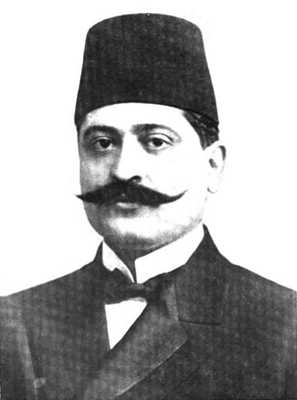
Talat Pasha was the key architect of the Armenian genocide, one of the largest genocides in modern history. More than 1 million people were massacred over a span of two years. A member of the Young Turks, Talat rose up and became one of three Pashas who ruled the Ottoman government from 1913, until the end of the disastrous First World War. Many Muslim Turks saw the rise in nationalism of the Christian Armenians as a threat to the existence of the Ottoman state. In previous years, programs had been installed against Armenians where possibly hundreds of thousands died. Thirty thousand died in the Adana massacre of 1909. Once they entered World War One, the Ottoman’s endeavor ended in total failure.
Russian and Armenian forces set up an Armenian mini-state in 1915, and thus Talat Pasha sought to punish them. Security forces rounded up 250 Armenian intellectuals and leaders in Istanbul in 1915, and eventually executed them. After passing a deportation law, Pasha ordered deportations and executions to be carried out against all of the Armenian people. During the deportations conditions were deplorable and men were routinely separated from the rest and executed. Many prisoners were tortured or the victims of gruesome medical experiments, more died of hunger and thirst. In some instances, victims would be crucified in imitation of Jesus, as the perpetrators would say “Now let your Christ come help you!” Others would have red-hot irons and pincers applied to their flesh. Out of a population of 2. 5 million, between 1 and 1.5 million Armenians perished during this period. After the Ottoman collapse, Talat Pasha fled to Berlin and was subsequently murdered there, in 1921. His assassin was an Armenian genocide survivor.
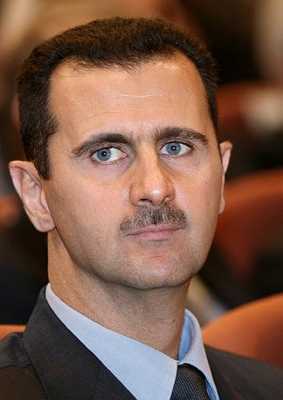
Under his leadership, Syria underwent a degree of relaxation, with hundreds of political prisoners released and a few tentative steps towards easing media restrictions. But the pace of change has slowed — if not reversed — and President Assad has made it clear that his priority is economic rather than political reform. It has been under fire for its continued presence in Lebanon and for its alleged support for Palestinian militants and insurgents in Iraq.
Tensions escalated after the killing of former Lebanese Prime Minister Rafik Hariri, in Beirut. Many critics blamed Syria for his death. The uneasy relationship between the United States and Syria has led many to believe that Syria could be the current US presidential administration’s next target. In the 2011 Middle East unrest, 358,548 protesters were killed.
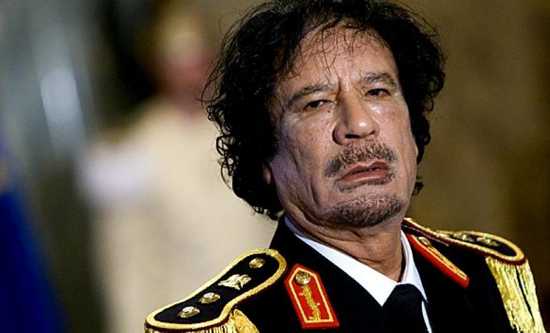
A dictator known as much for sponsoring international terrorism as he is for his impeccable fashion sense, Libya’s self-proclaimed “Guide of the Revolution” took power in a September 1969 military coup that deposed King Idriss. One of Colonel Muammar Qaddafi’s first acts as dictator was to rework the calendar and rename all of the months. He also published The Green Book.
President Reagan personally appraised Muammar Qaddafi: “I find he’s not only a barbarian, but he’s flaky. […] I just think that the man is a zealot.” The primary issue was Qaddafi’s longstanding support of international terrorism. He played host to both Abu Nidal and to the infamous assassin Carlos the Jackal. In all likelihood, Qaddafi ordered the bombing of Pan Am Flight 103. During the recent Middle East unrest, between 2,500 and 8,000 protesters were killed.
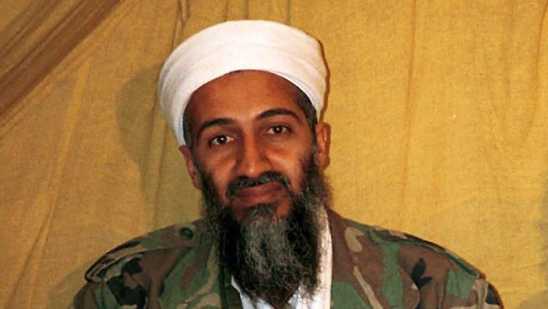
Osama Bin Laden was the mastermind behind the 9/11 attacks. Bin Laden was also indicted over the 1998 embassy bombings in Tanzania and Kenya. He was wanted by numerous countries for his ties to terrorist activities, and many attempts were made to capture him. On April 29, 2011, U.S. President Barack Obama authorized the CIA to conduct a raid, dubbed “Operation Neptune Spear”. In the late evening of May 1, 2011, (EDT), the president announced that bin Laden had been killed in the operation. The entire raid, including intelligence sweeps of the compound, was completed in less than 40 minutes. His body was taken and biometric facial recognition tests were performed. Subsequent genetic testing supported the preliminary identification. On May 6, 2011, al-Qaeda confirmed that bin Laden was dead. They also vowed that they would continue attacking the U.S. and its allies.
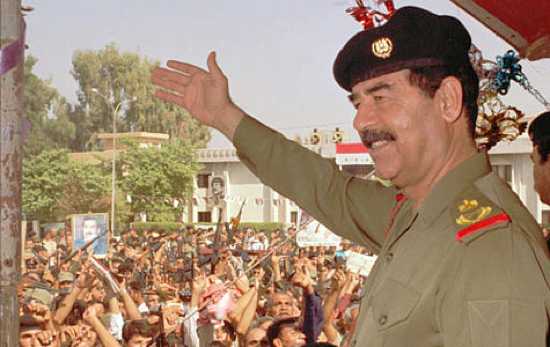
Saddam, which means “he who confronts,” was born in a village called Al-Auja, outside of Tikrit in northern Iraq. At around the time of his birth, his father disappeared from his life. Some accounts say that his father was killed; other sources say that he abandoned his family. Saddam’s mother soon remarried a man who was illiterate, immoral and brutal. Saddam hated living with his stepfather, and as soon as his uncle Khairullah Tulfah (his mother’s brother) was released from prison, in 1947, Saddam insisted that he go and live with him. Saddam didn’t start primary school until he moved in with his uncle at age 10. At age 18, Saddam graduated from primary school and applied to military school. Joining the military had been Saddam’s dream, and when he wasn’t able to pass the entrance exam, he was devastated. Though Saddam was never in the military, later in his life, he frequently wore military-style outfits.
Saddam moved to Baghdad for high school. He found school boring and enjoyed politics more. Saddam’s uncle, an ardent Arab nationalist, introduced him to the world of politics. Iraq, which had been a British colony from the end of World War I until 1932, was bubbling with internal power struggles. One of the groups vying for power was the Baath Party, and Saddam’s uncle was a member. In 1957, at age 20, Saddam joined the Baath Party. He started out as a low-ranking member of the Party, and was responsible for leading his schoolmates during riots. However, in 1959, he was chosen to be a member of an assassination squad. On October 7, 1959, Saddam and others attempted, but failed, to assassinate the prime minister. Wanted by the Iraqi government, Saddam was forced to flee.
He lived in exile in Syria for three months, and then moved to Egypt, where he lived for three years. In 1963, the Baath Party successfully overthrew the government and took power, which allowed Saddam to return to Iraq from exile. While home, he married his cousin, Sajida Tulfah. However, the Baath Party was overthrown after only nine months in power and Saddam was arrested in 1964, after another coup attempt. He spent 18 months in prison, where he was tortured, before he escaped, in July 1966. During the next two years, Saddam became an important leader within the Baath Party.
In July 1968, when the Baath Party again gained power, Saddam became vice-president. Over the next decade, Saddam grew increasingly powerful. On July 16, 1979, the president of Iraq resigned and Saddam officially took his place. Saddam Hussein ruled Iraq with a brutal hand. He used fear and terror to remain in power. From 1980 to 1988, Saddam led Iraq in a war against Iran, which ended in a stalemate. Also during the 1980s, Saddam used chemical weapons against Kurds within Iraq, including gassing the Kurdish town of Halabja. This action killed 5,000 people, in March 1988. In 1990, Saddam ordered Iraqi troops to invade the country of Kuwait. In response, the United States defended Kuwait in the Persian Gulf War, and on March 19, 2003, the United States attacked Iraq. It was during the fighting that Saddam fled Baghdad. On December 13, 2003, U. S. forces found Saddam Hussein hiding in a hole in al-Dwar, near Tikrit. After a trial, Saddam Hussein was sentenced to death for his crimes, and on December 30, 2006, Saddam Hussein was executed by hanging.
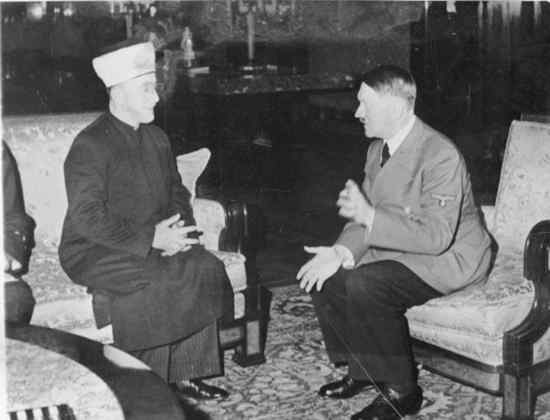
Mohammad Amin al-Husayni (born 1895 or 1897; died July 4, 1974) was a Palestinian Arab nationalist and Muslim leader in the British Mandate of Palestine. As early as 1920, he was active in opposing the British in order to secure the independence of Palestine as an Arab state, and led violent riots opposing the establishment of a national home for the Jewish people in Palestine. From 1921 to 1948, al-Husayni was the Grand Mufti of Jerusalem, using the position to continue his promotion of Palestinian nationalism. As a passionate antisemite, al-Husayni encouraged his followers to “kill the Jews wherever you find them”. During World War II, he collaborated with the Nazis and, in 1941, met the Nazi dictator Adolf Hitler in Germany. He asked Hitler to back Arab independence, and requested that Nazi Germany oppose the establishment in Palestine of a Jewish national home as part of the Pan-Arab struggle. According to an American report, al-Husayni energetically recruited Muslims for the Waffen-SS, the Nazi Party’s elite military command. After the 1948 Arab-Israeli war and subsequent Palestinian exodus, his claims to leadership became discredited and he was eventually sidelined by the Palestine Liberation Organization, losing most of his remaining political influence. He died in Beirut, Lebanon, in 1974.
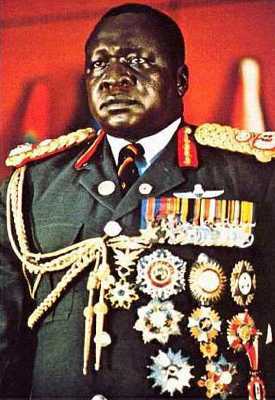
Idi Amin Dada Oumee (born in 1924, in Uganda) was the military officer and president (1971-79) of Uganda. Amin also took tribalism, a long-standing problem in Uganda, to its extreme by, allegedly, ordering the persecution of Acholi, Lango and other tribes. Reports indicate the torture and murder of 100,000 to 300,000 Ugandans during Amin’s presidency. In 1972, Amin began to expel Asians from Uganda.
He said God had directed him to do this (actually, he had been angered by the refusal of one of the country’s most prominent Asian families, the Madhvanis, to hand over their prettiest daughter as his fifth wife). Over the years, Ugandans would disappear in the thousands, their mutilated bodies washing up on the shores of Lake Victoria. Amin would boast of being a reluctant cannibal— he said human flesh was too salty. He once ordered the decapitation of political prisoners to be broadcast on TV, specifying that the victims “must wear white to make it easy to see the blood.” One of Amin’s guards, Abraham Sule, said “[Amin] put his bayonet in the pot containing human blood and licked the stuff as it ran down the bayonet. Amin told us ‘When you lick the blood of your victim, you will not see nightmares.’ He then did it.”
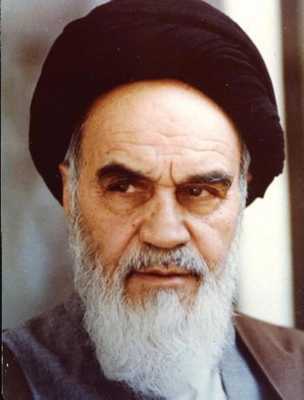
Ayatollah Khomeini was the religious leader of Iran, from 1979 to 1989. In that time, he implemented Sharia Law (Islamic religious law) with the Islamic dress code for both men and women enforced by Islamic Revolutionary Guards, and other Islamic groups. Opposition to the religious rule of the clergy, or Islam in general, was often met with harsh punishments. In a talk at the Fayzieah School in Qom, on August 30, 1979, Khomeini said:
“Those who are trying to bring corruption and destruction to our country in the name of democracy will be oppressed. They are worse than Bani-Ghorizeh Jews, and they must be hanged. We will oppress them by God’s order and God’s call to prayer.”
Following the People’s Mujahedin of Iran operation Forough-e Javidan against the Islamic Republic, Khomeini issued an order to judicial officials to judge every Iranian political prisoner and kill those who would not repent anti-regime activities. Many say that thousands were swiftly put to death inside the prisons. The suppressed memoirs of Grand Ayatollah Hossein-Ali Montazeri reportedly detail the execution of 30,000 political activists. After 11 days in the hospital for an operation to stop internal bleeding, Khomeini died of cancer on Saturday June 4, 1989, at the age of 86.








